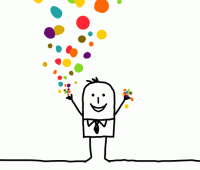How to Rejuvenate Yourself and Your Students After Testing
Your content has been saved!
Go to My Saved Content.Here in California, we're mid-way through the spring testing frenzy. This is a challenging time for many of us working in and with public schools, as well as for kids themselves. I don't like it; all kinds of feelings and thoughts come up for me that don't make me an effective educator.
One of the ways I deal with them is by dreaming about and planning what kids can do once testing ends. But before I share those suggestions, I want to urge you, right now, to watch this spoken word video called, "I Will Not Let An Exam Result Decide My Fate." The message gets to the core of what's wrong with testing; the delivery proves this. Watch it. Right now.
The creativity demonstrated in this video got me thinking about how engaging in the arts are an antidote to standardized tests: to the kinds of skills children need to use on those tests, (low level, bubble coloring) to the weeks of test prep and boredom and rote practice, to the brain-numbing, soul-crushing, dehumanization of the whole endeavor. After this season of standardization, what better to bring into our classrooms than the abstract, non-prescriptive, creative wildness of the arts?
Art Integration and Art as Catharsis
Let me say one thing first: I believe that arts should be integrated into all subjects, for all ages. They open one's mind into looking into any discipline in a new way and offer us different perspectives. The arts also help us develop skills that we need in many disciplines, even those seemingly unrelated (for example, some medical schools now require that doctors take drawing classes in order to hone their observation skills).
But the arts can also be used as a catharsis, as a break and a way to rejuvenate the soul and mind and heart. That's what I'm proposing we do in the week or two after testing ends. Whether you teach a third grade or tenth grade science, even if you know nothing about teaching art and have no skills yourself, you can set up some activities which might help your students tap into other ways of experiencing the world and express themselves in different ways.
What to Do
Here's a list of somewhat random activities. This list is intended to get your mind going and send you off researching what might be most appropriate for your students. Some are clearly connected to specific content areas and disciplines for those who want art activities that are connected to the subject you teach.
In creating this list, I am aware that there are many schools that don't have any money to spend on any art supplies, and teachers who might see 150 students per day. Even if these are the conditions in which you find yourself, you can still bring the arts into your classroom.
- Play music for your students. Do a genre or composer study. Listen to music with the lights off. Invite students to draw or paint while they listen. Share music they may never have heard: Tibetan monks chanting, Balinese gamelan, West African blues, Andeans flutes. Play Beethoven.
- Do observational drawing -- all you need are pencils (probably some left over from testing -- transform their usage!) and paper.
- Do life drawing. Pose for your students (they'll love that). Draw plants.
- Cut up tissue paper, paint over it with water colors, squirt glue in different patters.
- Photography -- look at photos, study them, discuss them. What makes some more powerful? And if you have the resources -- send students out on a photographing mission.
- Record sounds of nature and have kids listen to them in a dark room-a great activity connected to science (scientists use other senses in their work).
- Collage -- get donations of old magazines and create new images. Everyone loves tearing up magazines and using glue.
- Look for high speed YouTube videos of something like raindrops hitting the ground (this can be connected with physics and math -- mass, acceleration, vectors). This helps develop visual appreciation for how things look.
- Algebra was invented in the Middle East by artists trying to figure out tile patterns -- look at tile patterns and how they connect to geometry.
- Observe symmetry in nature.
You can get more ideas here.
One you start looking and thinking, you'll find endless resources and more ideas than you can ever implement. I'm just hoping that I'm inspiring you to go out and find a way to bring arts into your classroom when testing ends.
One More Thing: The Arts Transform Schools
Check out this story about a "failing" school in Massachusetts that was "plagued by violence." A new principal came in, fired the security guards, and hired art teachers and the school has been transformed.
Thanks to my husband, Stacey Goodman, for sharing his thoughts on this matter. He's a high school art teacher (check out the work he does with his students).
How do you rejuvenate your students and yourself after testing? Please share with us in the comment section below.
